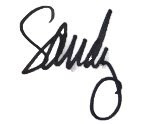feathers du jour, might be from Madam Toussades Turkey Petting Zoo
Think of and look at your work as though it were done by your enemy. If you look at it to admire it, you are lost." (Samuel Butler)
Today Robert Genn in his 'Painters Keys' email talked about critique, specifically self-critique. This is a subject dear to my heart having suffered the slings and arrows of so many critiques back in school. Every class seemed to do a weekly big deal critique with stuff on the wall and a class ready to pounce! It took a while to get over the personal part, though I maintain still that some of my peers had a thought that making someone else's work look bad was a good way to make theirs look good (or, ummm, 'gooder'). But that aside, the process was invaluable. We learned to divorce ourselves from our work, stand back and see it with new eyes, and forge ahead with new ideas on how to improve it, or a direction to take 'next time'.
As I grew into doing actual art work, I was fortunate to fall in with a bunch of local quilt artists back in the late 70's and early 80's who were at similar stages of their art making careers. This merry band of women met every three weeks in the evening and we shared stories, shared what we were reading, and finally shared work in progress. They were of the supportive mind set, and we wordlessly decided that it would only be constructive criticisms with helpful advice which may or may not have grown from my story about an old painting teacher who constantly compared my shapes to food items: "And what is this MUFFIN over here?" or "Are you actually going to leave that FRIED EGG hanging off the tree?" and "Oh look- a BROCCOLI forest!" Sigh. He did this to everybody, not just me. He also talked constantly about two shapes 'kissing' when they came together at unfortunate areas. Paintings shouldn't have any kissing going on. OK, then.
But back to my group: We would flop our work on the floor o a dimly lit hallway because that was the largest space to show, and many times it was simply blobs of fabric pinned in place and too fragile to hang. We would walk around the piece and see it from all angles and would listen to the artist talk about inspiration or intent or whatever she wanted to talk about. Then we would ask questions or clarify things, and finally offer suggestions or cudos or give encouragement to search a little deeper. NONE of us ever miss one of these sessions.
But alas I have moved away and only get to a crit group meeting now and then. They now meet once a month because without kids and jobs now they all travel a lot, so meetings are not as full as they used to be. In addition we have all gone in different directions now with our work and are exhibiting in different kinds of places if at all. But we are still all very invested in our crit group.
I work alone. Occasionally I have a studio partner but she is soon moving away and I will be back to no extra eyes or ears to talk my way through a work in progress. Here Richard talks about how necessary that alone-time is:
Divorcing yourself from the preciousness of your efforts and seeing your work as it really is takes time and mileage. This means "alone time" in your working area. I'm sorry, but my observation has been that no quality work or strong direction will arise in environments where consultants are readily available.
This is good news for me, because working in a vacuum gets hard sometimes. Frankly I receive a lot of criticism for spending so much time at the studio (alone!), and find that people just don't get it. He goes on to list some of the things that the lone-artist can ask herself about her work:
Not surprisingly, when you switch from creation mode to critique mode, you tend to lose the magic of inspiration and substitute a more pedestrian, mechanical approach. A checklist is valuable. In serious sobriety you need to write and follow your own list. I use a series of varying questions: Meaningful subject? Strong patterns? Middle tones? Interlocking gradations? General gradations? Echoing shapes? Flowing design? Alluring counterpoint? Lost and found? Focal point? Big and small? Overall simplicity? Complex shapes? Visual depth? Interesting surface? Arial perspective? Sophisticated colour? Natural believability? What could be?
Note the last phrase, "What could be?" This is a translation of my own 'WHA'IF...' that spurs me on until the last stitch is taken in the last side of binding! Wha'if I added green here, wha'if I cut it up the middle and reverse that side, wha'if I just set this aside and let it compost awhile?
Wha'if?
But I still miss my crit group.



No comments :
Post a Comment